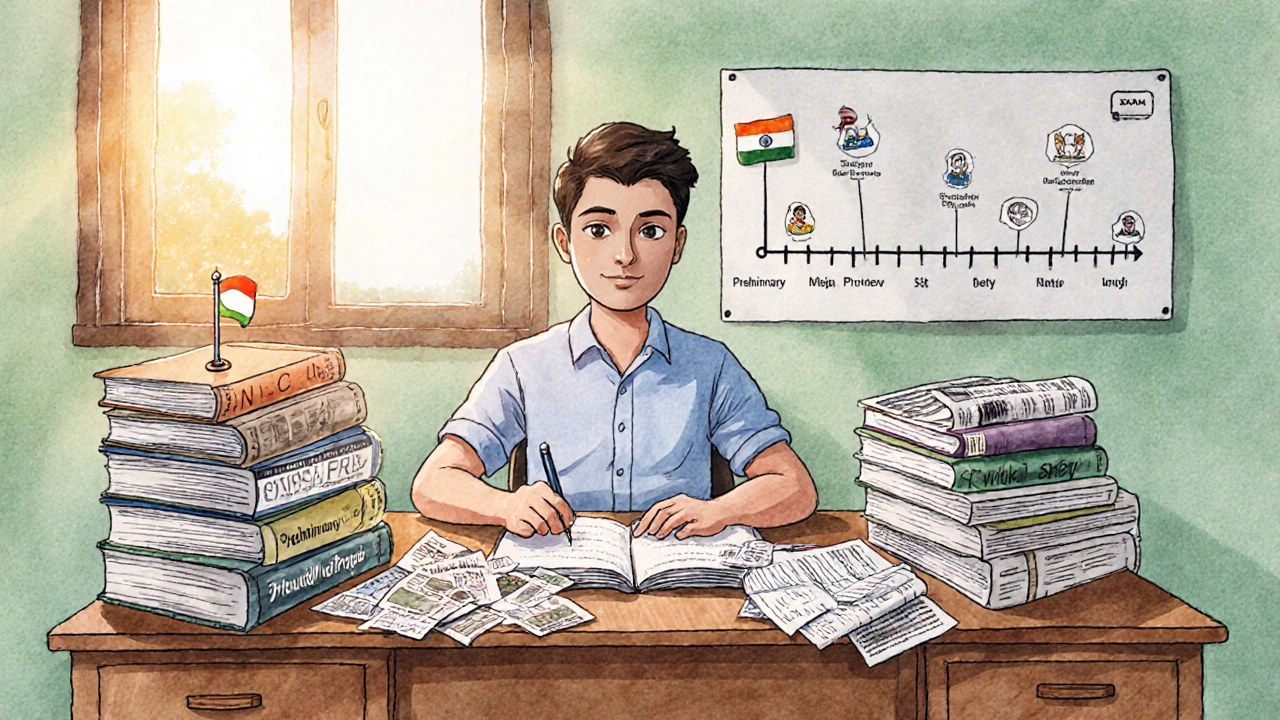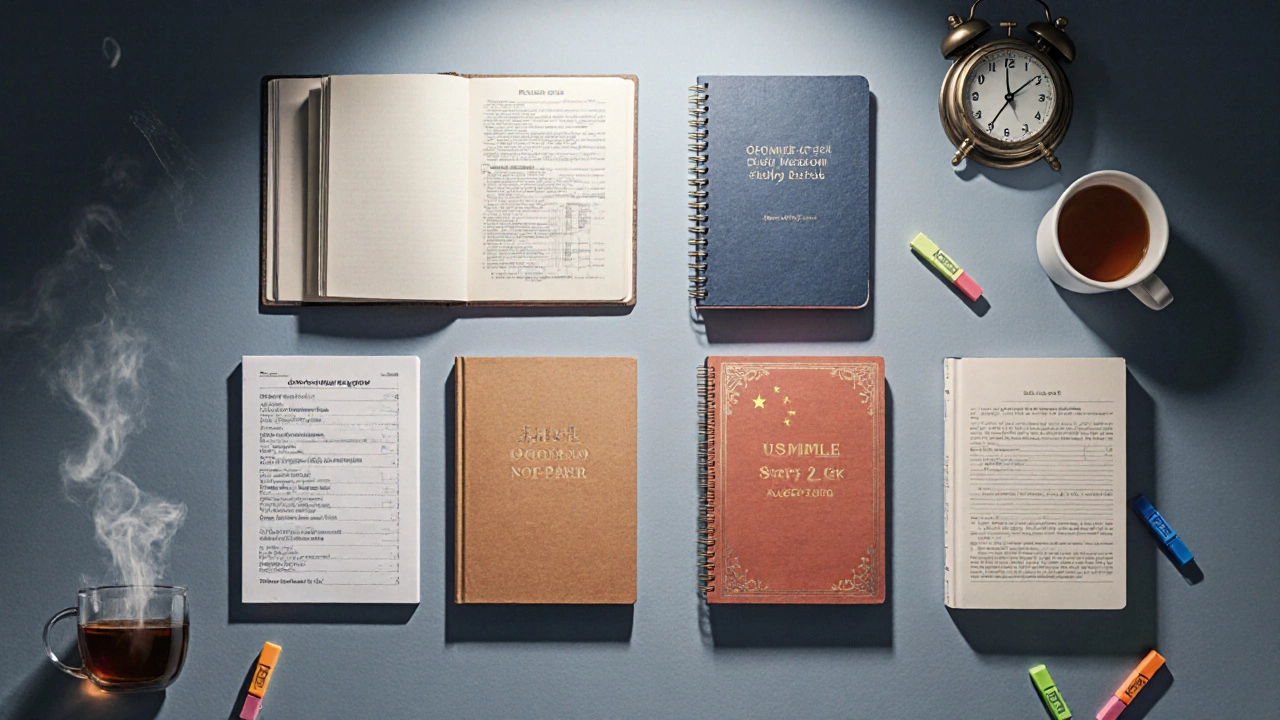Exam Toughness Comparison Tool
Compare the world's most difficult exams based on key metrics. Select exams to see how they measure up on pass rate, preparation time, scope of knowledge, and psychological pressure.
Select exams to compare metrics
Select at least two exams to see comparative insights
Quick Takeaways
- Exam difficulty is measured by pass rate, preparation time, and breadth of knowledge required.
- India’s UPSC Civil Services Exam consistently tops the list with a sub‑1% success rate.
- Other heavyweight contenders include China’s National Civil Service Exam, the USMLE, and JEE Advanced.
- Preparation strategies focus on disciplined study plans, mock tests, and mental resilience.
- Understanding the scoring methodology helps candidates set realistic goals.
When you hear people brag about “the hardest exam on the planet,” you’ll hear a chorus of names: the Indian UPSC, China’s Gaokao, the US Bar, the USMLE, and the JEE Advanced. But which one truly earns the crown? This article breaks down the data, compares the toughest tests head‑to‑head, and explains why a particular exam edges out the rest.
How to Measure Exam Toughness
Not all exams are created equal, so we need a clear rubric. We look at four key attributes:
- Pass rate - the percentage of candidates who clear the final stage.
- Hours of study required - average preparation time reported by successful candidates.
- Scope of knowledge - number of subjects and depth of understanding needed.
- Psychological pressure - how many candidates drop out because of stress.
By weighting each factor, we can rank exams on a 0‑100 toughness index. The higher the index, the tougher the exam.
World’s Toughest Exams: The Heavyweights
Below is a snapshot of the most frequently cited candidates. Each entry includes a brief definition wrapped in Union Public Service Commission Civil Services Examination - India’s premier recruitment test for the Indian Administrative Service, Indian Police Service, and other elite cadres. The exam spans three stages: Pre‑Preliminary, Preliminary, and Main, followed by a demanding interview.
Another giant is Chinese National Civil Service Examination - A multi‑stage assessment used to select candidates for China’s central government ministries and provincial agencies. It features a 2‑hour written test covering politics, law, economics, and a rigorous oral component.
The US Medical Licensing Examination (USMLE) - Three‑step exam required for medical licensure in the United States, testing clinical knowledge, problem‑solving, and patient safety turns fresh medical graduates into licensed physicians. Its Step2CK pass rate hovers around 95%, but the cumulative failure risk across all three steps is significant.
Joint Entrance Examination (JEE) Advanced - India’s gateway to the Indian Institutes of Technology, demanding mastery of physics, chemistry, and mathematics at an Olympiad level sees only about 2% of applicants earn a seat.
Even the Bar Exam (United States) - A rigorous state‑by‑state test that determines if a law graduate can practice law, covering constitutional law, contracts, torts, and ethics posts pass rates between 50% and 80% depending on the jurisdiction.
For completeness, we also mention Gaokao - China’s National College Entrance Examination, a 9‑hour marathon testing Chinese, mathematics, and a chosen science or humanities track. While the sheer scale is massive, the pass‑rate‑ish is higher because it determines university admission rather than elite service positions.
Lastly, the International Baccalaureate Diploma (IB) - A two‑year pre‑university programme requiring essays, oral exams, and a 4,000‑hour project portfolio is tough academically but its completion rate is around 78%.

Why the UPSC Civil Services Exam Takes the Crown
When we plug the four metrics into our toughness index, the UPSC emerges at the top with a score of 92 out of 100. Here’s why:
- Pass rate: Only 0.7% of the roughly 1million candidates who clear the Preliminary stage succeed overall.
- Study time: Successful aspirants report 4,500‑plus hours of study over two years.
- Scope: The Main exam consists of nine papers covering Indian polity, economics, ethics, geography, optional subjects, and essay writing.
- Pressure: The interview adds a subjective layer, and the entire process can span 18 months from start to final results.
Unlike many professional licensure exams that focus on technical knowledge, the UPSC demands a blend of factual recall, analytical writing, and personality assessment-all under a tight timeline.
Side‑by‑Side Comparison
| Exam | Annual Candidates | Pass Rate | Avg. Prep Hours | Subjects Covered |
|---|---|---|---|---|
| UPSC Civil Services | ~1,000,000 (Pre‑lims) | 0.7% | 4,500+ | Polity, Econ, Ethics, Geography, 2 Optional |
| Chinese National Civil Service | ~400,000 | 1.2% | 3,800 | Law, Politics, Economics, Public Management |
| USMLE (All Steps) | ~200,000 | ~6% cumulative failure | 2,000‑3,000 | Clinical Knowledge, Patient Safety, Ethics |
| JEE Advanced | ~180,000 | 2.0% | 3,000‑4,000 | Physics, Chemistry, Mathematics |
| US Bar Exam (average) | ~80,000 | 65% | 1,500‑2,000 | Constitutional Law, Contracts, Torts, Ethics |
Effective Preparation Strategies for the Toughest Exams
If you aim to conquer any of these behemoths, a systematic plan matters more than sheer hours.
- Goal‑setting: Break the syllabus into weekly targets and track completion.
- Source the right material: Use official syllabi, past papers, and high‑quality coaching notes.
- Mock exams: Simulate real‑time conditions at least once a month; analyze every mistake.
- Peer discussion: Join study groups; teaching a concept reinforces retention.
- Health routine: Regular sleep, balanced diet, and short workouts keep cognition sharp.
For the UPSC specifically, candidates often allocate the first year to covering the NCERT textbooks, the second year to answer writing practice, and the final months to mock tests and interview drills.
Common Myths About the Toughest Exams
Myth 1: “Only geniuses can pass.” Reality: Consistent effort beats raw IQ. Data from UPSC coaching centers shows students with average school scores succeed after disciplined study.
Myth 2: “Coaching is mandatory.” Reality: Self‑study works if you have a solid plan. Many top scorers cite curated online resources as their main material.
Myth 3: “You must study 24/7.” Reality: Burnout is a real risk. Scheduled breaks improve long‑term retention.
What If You’re Not Ready for the #1 Exam Yet?
Choosing a slightly less brutal alternative can still open elite career paths. For instance, the Indian State Public Service Exams have pass rates of 4‑5% and still lead to respected administrative roles. Or, the USMLE Step1 alone (pass rate ~96%) can be a stepping stone to a medical career without tackling all three steps at once.
Frequently Asked Questions
Which exam has the lowest pass rate?
The UPSC Civil Services Examination records a pass rate of about 0.7%, making it the toughest in terms of sheer selectivity.
Is the UPSC harder than the Chinese civil service exam?
Both are extremely demanding, but the UPSC’s multi‑stage format, longer preparation window, and broader subject list give it a slightly higher toughness index.
Can I prepare for the UPSC without joining a coaching institute?
Yes. Many successful candidates use free online lectures, NCERT textbooks, and disciplined self‑study schedules. Coaching can help with strategy but isn’t a strict requirement.
How many hours do I need to study for the JEE Advanced?
Top performers typically log 3,000 to 4,000 hours over two years, focusing on problem‑solving practice and concept revision.
What’s the best way to manage stress during preparation?
Incorporate short breaks, physical activity, and mindfulness techniques. Tracking progress also reduces anxiety by showing tangible improvement.
